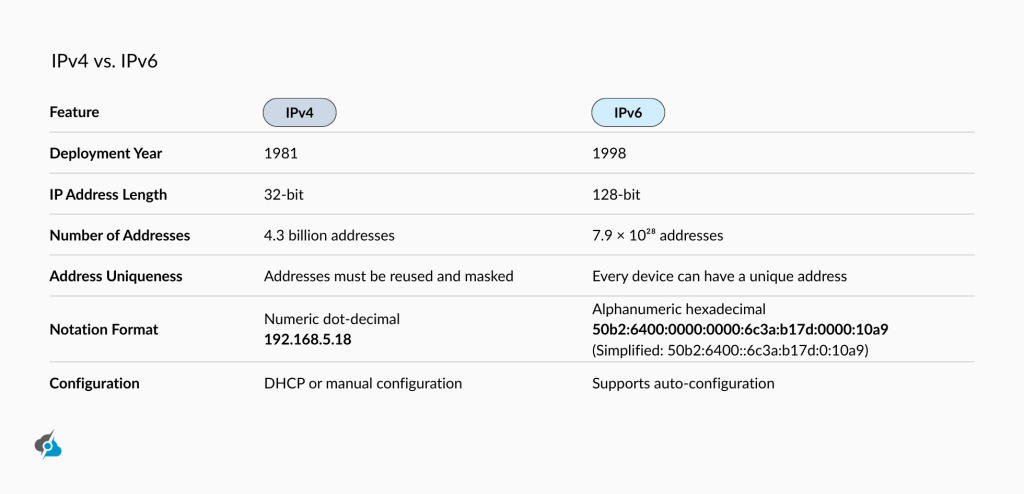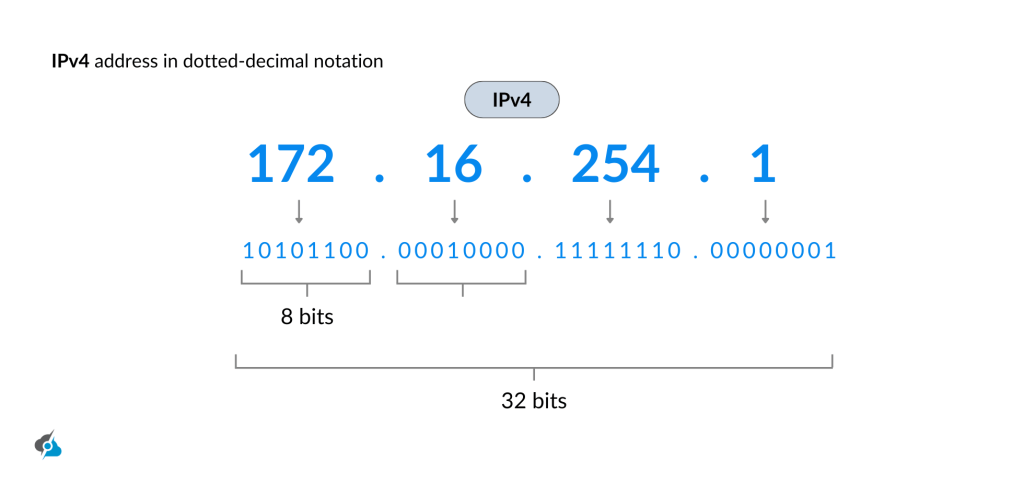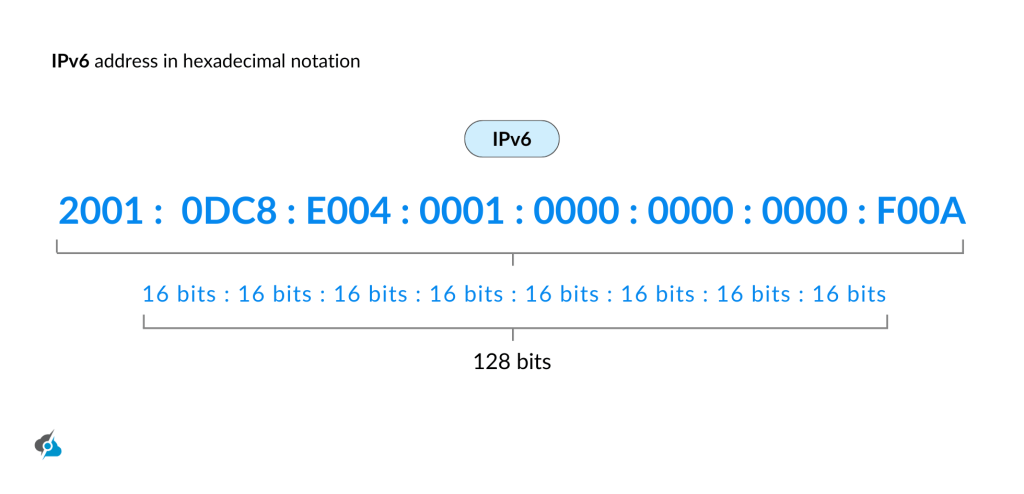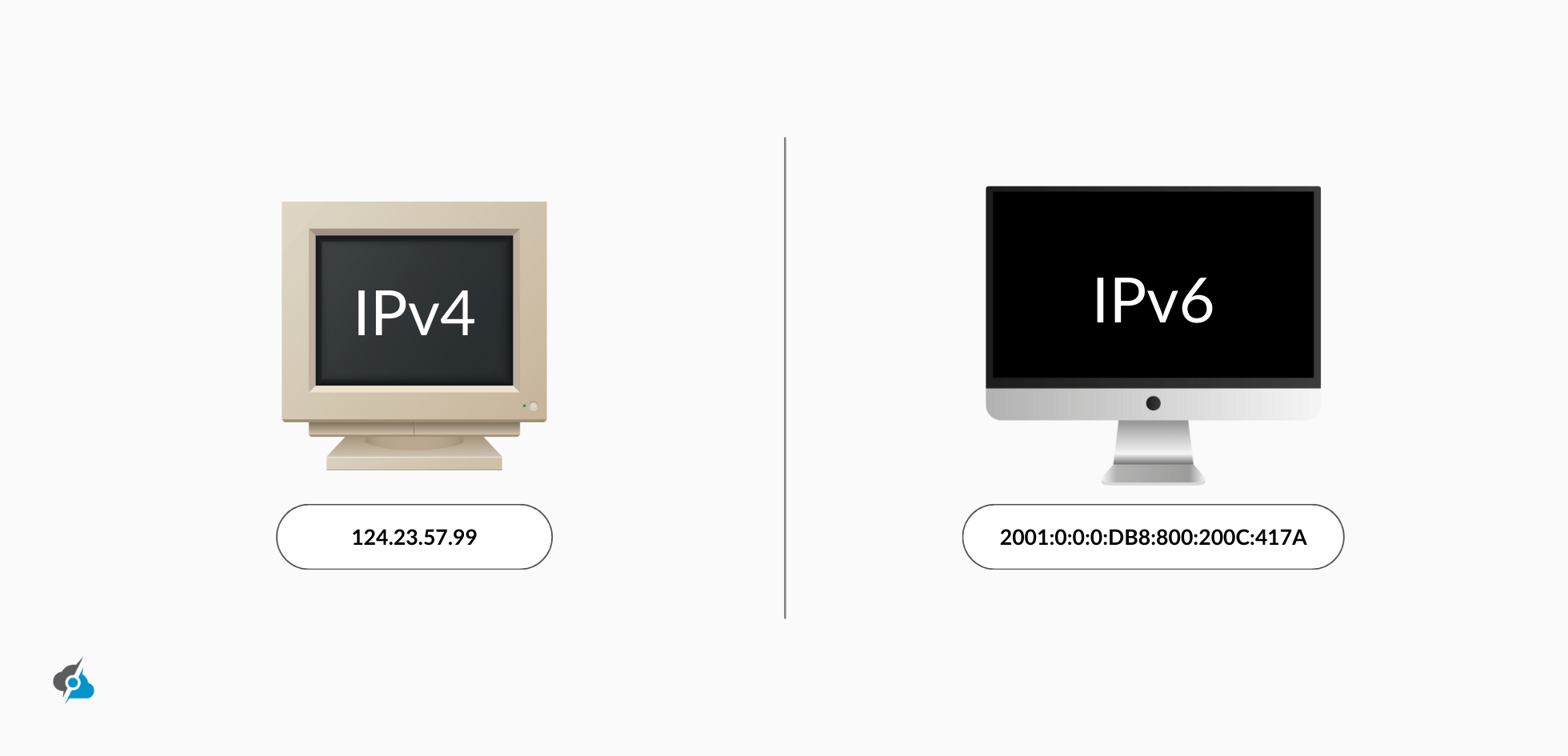IPv4 vs IPv6 – What’s the Difference and Which Is Better for Your Business?

In today’s digital world, how we connect comes down to two systems: IPv4 and IPv6. Every device on a network, from your phone to your laptop, needs a unique identifier called an IP address to communicate. For decades, IPv4 has been the backbone of the internet, but with the explosion of connected devices, its address pool is nearing exhaustion. That’s where IPv6 comes in, offering a vastly larger supply of IP addresses to meet the growing demand.
But that doesn’t mean IPv4 is going away anytime soon. In fact, it’s still essential for many networks.
That’s why ServerMania now offers flexible IPv4 leasing solutions, making it easy to secure the IPs you need without the upfront costs of ownership. You can also easily add IPv4 addresses to any server deployment, with options from the /30 range. While IPv4 is still the standard, our data centers feature both IPv4 and IPv6 connectivity, so your organization is ready for whatever the future brings.
We know that understanding the difference between IPv4 and IPv6 can feel a bit technical, so in this quick guide we’ll help you decide which one makes the most sense for your setup.
Let’s ask the big question!
What is an IP Address and Address Space?
Internet address is a unique number every device, like your computer or phone gets on a network, making it possible to communicate over the Internet. IP, short for “Internet Protocol,” is a digital address label, that supports every machine linked in the network. Handled by routing protocols like IPv4 and IPv6, this setup keeps data flowing smoothly between devices.
The internet address space is how many of those unique IP addresses each protocol can handle. IPv4, with its 32-bit limit, caps out at around 4.3 billion. In turn, IPv6 utilizes 128 bits, and provides a giant pool, something like 340 undecillion addresses. That large IP address space is why IPv6 is built for the long run, keeping our increasingly connected world open to new parties.
Definition of Internet Protocol:
The Internet Protocol, or IP, is the rule set that decides how data wraps around computer networks, keeping the world linked. It’s pretty much the way devices talk online, figuring out how to label, steer, and drop off info packets. Designed by the Internet Engineering Task Force, it comes in two routing protocols—IPv4 and IPv6, each with its own way of setting up addresses.
Without it, the internet we rely on, built on exact address assignment, wouldn’t work!
Understanding IPv4 and IPv6
To understand how the internet works, we need to unwrap IPv4 and IPv6—the two big players in the internet protocol handling. These systems decide how devices acquire their unique IP addresses and can communicate across computer networks.
We’ll break down the address formats, advantages, and challenges of each, showing what that means for internet communication. Let’s take a closer look!

IPv4 Address Format
IPv4 has been the core of internet protocol since 1981 and is still the go-to IP version for most devices. It uses a 32-bit address format, splitting into two parts: the network address and the host address. This setup is written as four numbers, each between 0 and 255, separated by dots—”178.163.132.60“.
Known as the dotted decimal format, it’s a human-friendly way to show what computers read as binary digits (0s and 1s), often linked to the ARPA DNS domain pointer for reverse lookups.
For example 128.11.3.31. Here, each number converts to an 8-bit binary string:
- 128 becomes 10000000
- 11 becomes 00001011
- 3 becomes 00000011
- 31 becomes 00011111
The IPv4 protocol was built for simpler times, when networking wasn’t that popular, assigning different IP addresses to identify machines connected to networks. While it’s capped at 4.3 billion combinations due to its limited address space, IPv4’s simple virtual communication layer still keeps it going, even as the internet’s grown way beyond what anyone back in ‘81 could’ve imagined.

IPv4 Advantages:
IPv4 has been a reliable networking protocol of communication for decades, and its main strengths lie in its straightforward design and widespread use.
Below are some key advantages that have kept it relevant in computer networks:
- 32-Bit Address Length: Provides approximately 4.3 billion different IP addresses, sufficient for the internet’s early needs.
- Address Resolution Protocol (ARP): Links IP network addresses to hardware addresses, ensuring packet flow identification for smooth delivery at the data link layer.
- Network Address Translation (NAT): Enables multiple devices to share a single public IP address, extending the limited address space effectively.
- Manual and DHCP Configuration: Supports flexible address assignment through manual setup or Dynamic Host Configuration Protocol (DHCP).
- Security Capabilities: IPv4 lacks native security but integrates with internet protocol security measures like IPSec for tailored protection of data across networks.
- Fragmentation: Permits routers to divide packets exceeding the maximum transmission unit (MTU), delivering more efficient routing.
- Packet Structure: Features a defined header and payload, with the header containing essential information for routing efficiency.
- Dot-Decimal Notation: Uses the well-known and intuitive x.x.x.x format (192.168.1.1), simplifying address management for administrators.
IPv4 Disadvantages:
While IPv4 has enabled seamless communication for years, it comes with a bunch of challenges that forced the release of IPv6 and we shouldn’t overlook it.
Here’s a look at the main challenges of IPV4 in the internet architecture:
- Limited Support: IPv4’s weak Quality of Service (QoS) only prioritizes some data types, dragging down real-time apps like video calls.
- Fragmenting Packets: Routers can split packets, raising the risk of data loss or corruption and minimizing the overall efficiency.
- Reduced Performance: Broadcasting to multiple devices creates unnecessary network traffic, slowing things down.
- Inefficient Routing: Its structure complicates packet exchange across forwarding routers, leading to slower data delivery and higher latency.
- Security Concerns: Without built-in security features, IPv4 leans on extra protocols, leaving it more open to cyber attacks.
- Limited Address Space: With just 4.3 billion different IP addresses, it can’t keep up with the flood of new devices connecting daily.
- Complex Configuration: Setting IP addresses via DHCP or manually is time-consuming, and challenging, prone to errors.
IPv6 Address Format
IPv6 comes in as the upgraded version of the networking protocol, bringing the 128-bit address format into the networking. Unlike IPv4, it uses an alphanumeric address with hexadecimal numbers, and eight groups split by colons, to create a massive address pool.
It looks like this AC02:FE10:5423:8976:DCAB:E102:8254:F320.
Released by the Internet Engineering Task Force in 1995, this design ditches the dotted decimal style of the IPv4 format for a cleaner setup with stateless address auto configuration. The wide address space, paired with anycast address capabilities handles way more unique IPs, making IPv6 the game-changer for devices connecting to the network.

IPv6 Advantages:
IPv6 brings an ultimate upgrade over IPv4, satisfying modern internet demands with some standout advantages and perks, changing the network’s direct communication.
Here’s where it matters the most:
- Mobile Devices Support: IPv6 boosts mobile devices with faster, safer connections, keeping up with the modern on-the-go approach.
- Prioritizing Capabilities: With better Quality of Service (QoS), paired with anycast address support, IPv6 increases website traffic flow and sharpens audio-video quality.
- Simplified Header Format: IPv6’s routing headers reduce costs and speed up communication compared to IPv4’s complex setup.
- Improved Security: Built-in security features in the IP layer, like encryption and authentication, alongside the neighbor discovery protocol, IPv6 delivers great connection safety.
- Larger Address Space: Utilizing a 128-bit address length, IPv6 dwarfs IPv4’s 32-bit limit, offering a huge pool of IP addresses for all our connected devices.
IPv6 Disadvantages:
While IPv6 offers impressive upgrades over its predecessor, implementing it comes with some hurdles and challenges that slow down its integration in global connectivity:
Here are the challenges and obstacles with IPv6:
- Lack of Visible Benefits: If address shortages aren’t an issue, many see no rush to switch, missing all the IPv6 perks like better security features.
- Coexistence Strategies: Tools boosting interoperability capabilities between IPv4 and IPv6 simplify the transition but keep older systems out of the picture.
- Lack of Immediate Need: Network Address Translation (NAT) stretches the IPv4 life by sharing a single public IP address, slowing down the demand for IPv6.
- Cost of Transition: Transitioning to IPv6 means pricey hardware changes, software updates, and employee training, which is challenging for any organization.
- Infrastructure Compatibility: Tons of routers, switches, and networking devices are still only compatible with IPv4, requiring massive upgrades to handle the IPv6 addressing system.
Differences Between IPv4 vs IPv6:
When it comes to addressing space, IPv4 and IPv6 are very different, each built for a different era of internet and networking. The table below shows in detail the main difference between IPv4 and IPv6 and how their capacity to assign addresses compares:
| IPv4 vs IPv6 Comparison: | ||
| Comparison | IPv4 | IPv6 |
| Address Layout | Four chunks are split by dots. | Eight parts with colons for hierarchical addressing. |
| Security Setup | Application dependant for security and protection. | Comes with integrated IPSEC for solid protection. |
| Address Capacity | Provides around 4.29 billion unique addresses. | Offers a massive 3.4 × 10³⁸ address options. |
| Configuration Style | Works with manual or DHCP address setups. | Uses auto-configuration and renumbering approaches. |
| Address Translation | Relies on NAT to share addresses. | Rarely needs NAT due to much larger address space. |
| IP Appearance | Written in decimal numbers. | Written in a hexadecimal style. |
| Header Size | Header spans 20-60 bytes. | Keeps a fixed 40-byte header. |
| Subnet Flexibility | Supports classless inter-domain routing and VLSM. | No VLSM or CIDR support. |
| Connection Integrity | End-to-end reliability is hard to nail down. | Locks in solid end-to-end connections. |
| Address Length | Built on a 32-bit system. | Built on a 128-bit system. |
| Packet Processing and Tracking | No option to track packet flows. | Enables packet flow identification with header flow label. |
| Encryption & Authentication | Lacks encryption and authentication natively. | Offers encryption and authentication. |
| Versions Conversation | Can switch to IPv6. | Not all IPv6 can flip back to IPv4. |
| Address Classes | Breaks into five classes: A, B, C, D, E | Scraps the whole class idea of address classes. |
We now know the main differences between IPv4 and IPv6, from address capacity to security features, helping us understand which protocol better suits today’s internet demands.

IPv4 vs IPv6 Speed:
Speed differences between IPv4 and IPv6 have a major impact on their design. IPv6’s simpler headers and efficient routing often beat the IPv4 complex structure, especially when IPv6 vs IPv4 latency tests show reduced delays. However, real-world performance varies based on network setup and adoption.
IPv4 vs IPv6 Security:
IPv4 relies on add-ons like IPSec for security, leaving it vulnerable without any extra effort. In contrast, IPv6 builds in network protocol security features like encryption, making it safer. Still, IPv4’s widespread use means more tested security in practice.
Which is Better IPv4 or IPv6?
There’s no one-size-fits-all answer, it really depends on your infrastructure, goals, and current setup.
IPv4 remains the backbone of the internet, and for good reason. It’s widely supported, easy to deploy, and familiar to IT teams everywhere. With techniques like NAT (Network Address Translation), IPv4 can still serve small to mid-sized organizations extremely well.
On the other hand, IPv6 is built for the future. With a vastly larger address pool and improved native security features, it’s the clear choice for organizations focused on long-term scalability, especially those managing large or rapidly growing networks.
In many cases, businesses benefit from running both protocols side by side, ensuring compatibility today while preparing for tomorrow.
IPv4 to IPv6 Internet Protocol Version Transition:
Transitioning from IPv4 to IPv6 is a giant leap in internet protocol versions, motivated by the limitations in address space deployed with IPv4. IPv6 brings a large pool of addresses and much better tools, but the transition is slow because of the complex address configuration.
A lot of the current networking gear, like routers, switches, and other internet devices is configured for IPv4, requiring bold spending on new hardware, software tweaks, and employee training.
In addition, NAT keeps IPv4 going, by allowing a bunch of devices to share one public IP address and decreasing the demand for change. The global adoption varies widely, still requiring continued IPv4 support for consistent and seamless communication.
As of March 2025, the comparison between IPv4 vs IPv6 continues, as well as the transition process persists. With the IPv6 built-in extra security measures gradually leads the networking toward a more robust addressing system.
Bridging the Gap Between IPv4 and IPv6
While IPv6 adoption continues to grow, the reality is that IPv4 still powers the majority of the internet. From legacy systems to compatibility requirements, IPv4 isn’t going anywhere just yet — and businesses still rely on it to stay connected and competitive. But the transition to IPv6 is inevitable, and understanding both protocols is key to future-proofing your infrastructure.
At ServerMania, we recognize the challenges of a limited IPv4 supply, and we’re here to help you stay ahead. That’s why we now offer clean IPv4 leasing, giving your business access to the IPs it needs without the upfront cost of ownership.
Get Ahead of the Curve
Whether you’re optimizing your current setup or planning for the future, our network solutions are designed to empower you.
Already planning for the future? Our new AraCloud platform delivers scalable, secure cloud infrastructure built for developers, businesses, and teams that want total control without complexity.
Was this page helpful?

